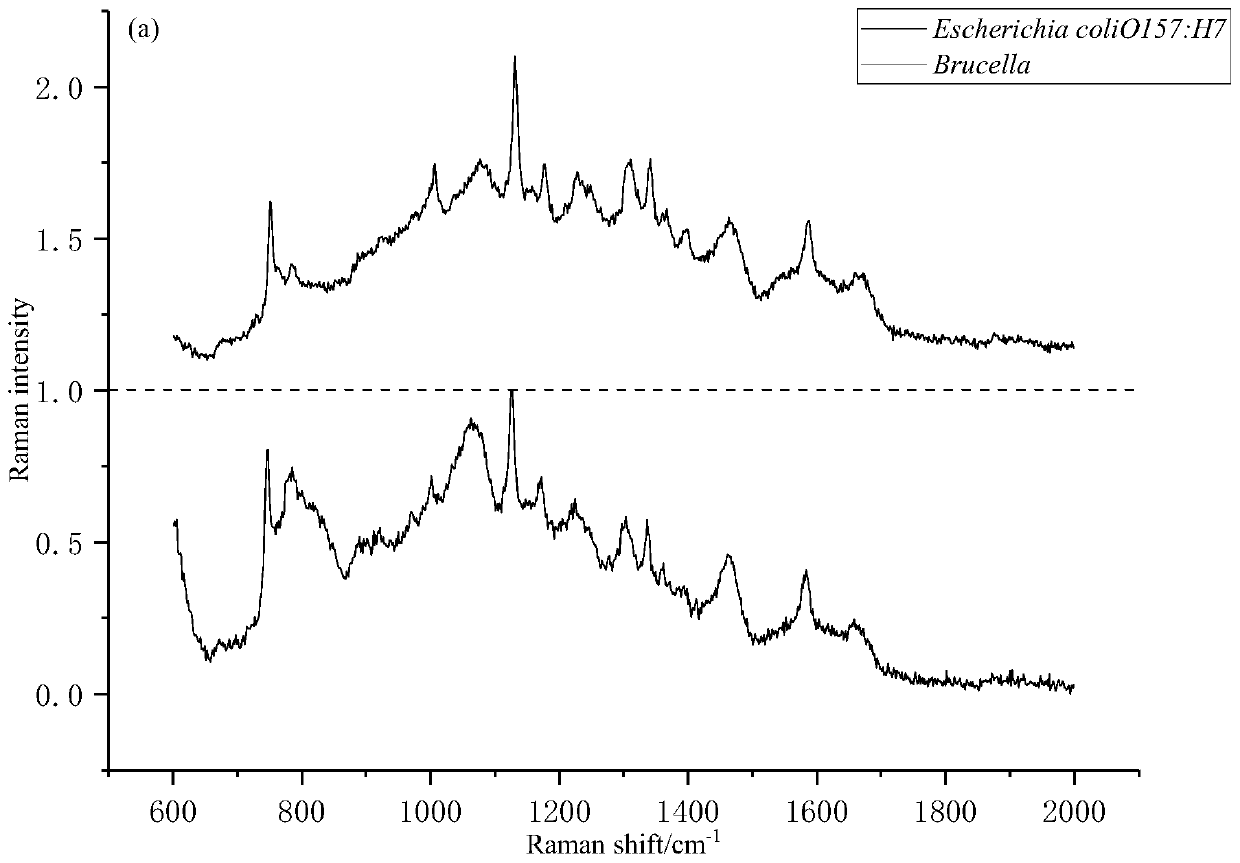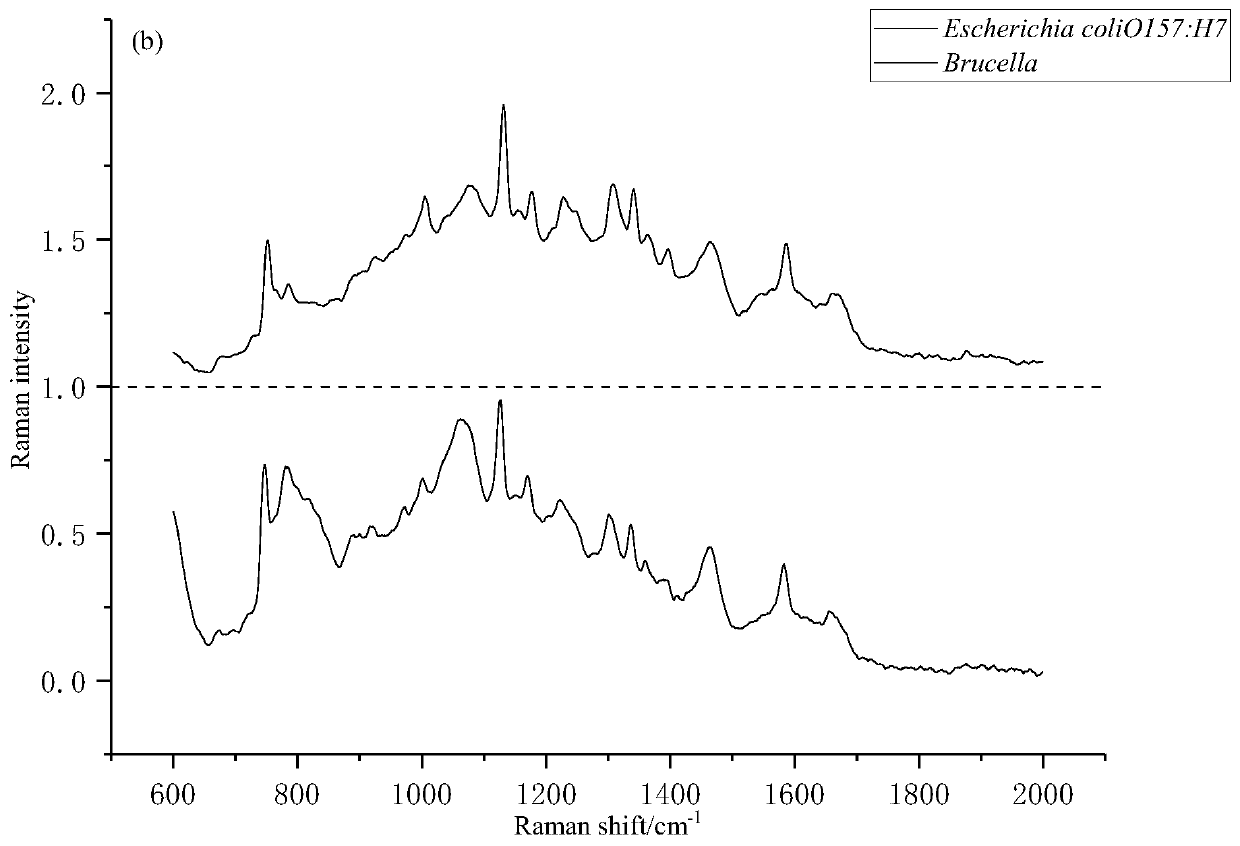Training method of food borne pathogenic bacteria Raman spectrum identification method established based on PCA-Stacking
A technology of food-borne pathogenic bacteria and Raman spectroscopy, applied in Raman scattering, character and pattern recognition, instruments, etc., can solve the problems of wrong identification of food-borne pathogenic bacteria and reduce the accuracy of artificial peak identification, etc. Achieving high classification accuracy
- Summary
- Abstract
- Description
- Claims
- Application Information
AI Technical Summary
Problems solved by technology
Method used
Image
Examples
Embodiment Construction
[0025] In order to make the above objects, features and advantages of the present invention more comprehensible, the present invention will be further described in detail below in conjunction with the accompanying drawings and specific embodiments.
[0026] like figure 1 As shown, the present invention provides a kind of training method based on the Raman spectrum recognition model of food-borne pathogenic bacteria established by PCA-Stacking, comprising:
[0027] Step S1, normalize the Raman spectra of the original Escherichia coli O157:H7 (Escherichia coliO157:H7) and Brucella S2 strain (Brucella), denoise the Raman spectra and subtract the fluorescence background;
[0028] Step S2, extracting principal components from the Raman spectrum after denoising and subtracting the fluorescent background;
[0029] Step S3, divide the data set after extracting the principal component into X:Y ratio, wherein, X+Y=100, X% is used as a test set, and Y% is used as a training set (train s...
PUM
 Login to View More
Login to View More Abstract
Description
Claims
Application Information
 Login to View More
Login to View More - Generate Ideas
- Intellectual Property
- Life Sciences
- Materials
- Tech Scout
- Unparalleled Data Quality
- Higher Quality Content
- 60% Fewer Hallucinations
Browse by: Latest US Patents, China's latest patents, Technical Efficacy Thesaurus, Application Domain, Technology Topic, Popular Technical Reports.
© 2025 PatSnap. All rights reserved.Legal|Privacy policy|Modern Slavery Act Transparency Statement|Sitemap|About US| Contact US: help@patsnap.com



